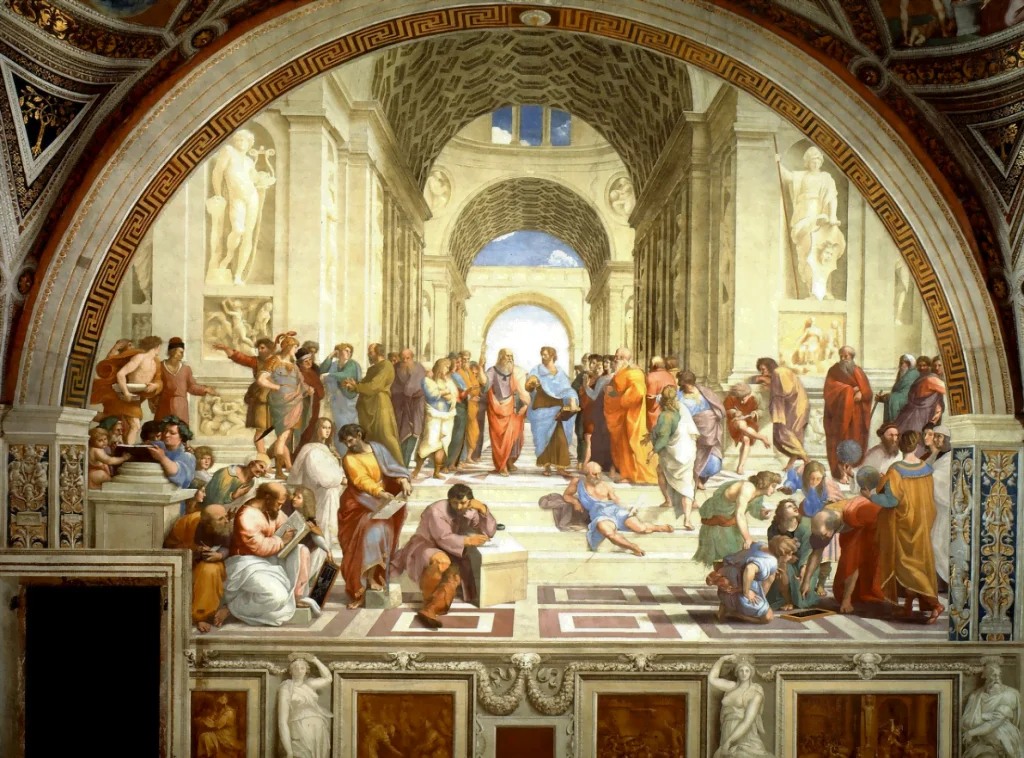Raffaello Sanzio da Urbino, better known as simply Raphael, was an Italian painter and architect from the High Renaissance. He is considered to be one of the most talented artists of his time.
Together with his contemporaries Leonardo da Vinci and Michelangelo, he is considered to be part of the trinity of great artists of this period.
He passed away at the age of 37, but his incredible work ethic ensured we can enjoy a large number of his paintings. In this post, we’ll take a closer look at the top 18 most famous paintings by Raphael.
18. La Velata
- Date created: 1516
- Location: 82 × 60.5 centimeters (32 × 23.8 inches)
La Velata or “La Donna Velata” is a painting that is believed to depict Rapahel’s mistress in Rome, a woman named Margarita Luti. It’s one of two portraits that he painted of his muse, a woman he loved until the day he died in 1520 but whom he never married.
This portrait is relatively small because it was completed at a time when he was already one of the most famous artists in Europe. His death just 4 years later came as a shock and abruptly ended the fascinating period known today as the High Renaissance.
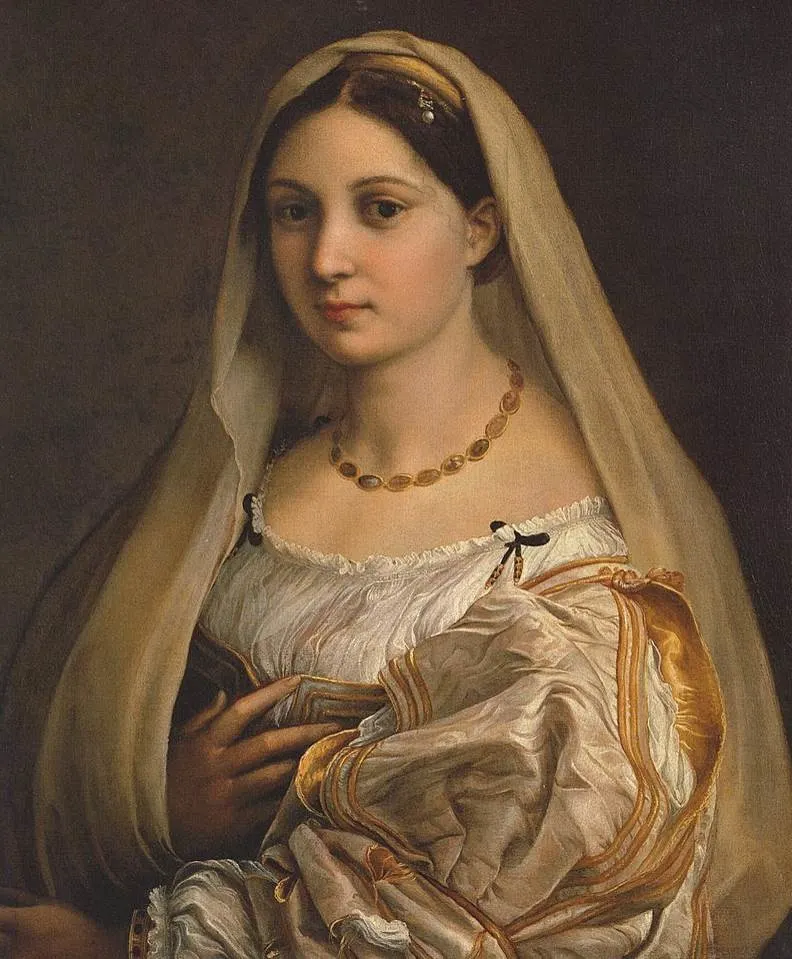
17. The Triumph of Galatea
- Date created: 1512
- Location: Villa Farnesina, Rome, Italy
The Triumph of Galatea is a fresco by Raphael that decorates the Villa Farnsina in Rome. It was commissioned by a rich Sienese banker named Agostino Chigi who wanted to decorate his newly constructed suburban mansion on the west bank of the Tiber River.
The fresco depicts a mythological scene featuring Galatea, a nereid or sea nymph in Greek Mythology. It covers a large space n the open gallery of the villa which now serves as a museum. This wonderful work of art has dimensions of 295 x 224 centimeters (116.1 x 88.1 inches).

16. Mond Crucifixion
- Date created: 1502-1503
- Location: National Gallery, London, United Kingdom
The Mond Crucifixion is the name of a painting also sometimes referred to as the “Gavari Altarpiece.” These are references to the former owner of the painting, Ludwig Mond, and the man who commissioned it in the early 16th century, Domenico Gavari.
It’s one of the first commissions that Raphael received and once decorated the church of San Domenico in Città di Castello, a small city near Urbino, the native city of the artist. It’s a large work as well as it has dimensions of 283.3 × 167.3 centimeters (111.5 × 65.9 inches).

15. Madonna del Prato
- Date created: 1504-1506
- Location: Kunsthistorisches Museum, Vienna, Austria

The Madonna del Prato is known in English as the Madonna in the Meadow. That’s a reference to the grassy landscape in which the figures are placed. The official title of the work is “The Madonna with the Christ Child and Saint John the Baptist,” a reference to the depicted figures.
The painting was commissioned by a rich cloth merchant from Florence and eventually made its way to Austria where it can be admired today. The painting has dimensions of 113 × 88 centimeters (44 × 35 inches) which was a standard size for Madonna paintings of the High Renaissance master.
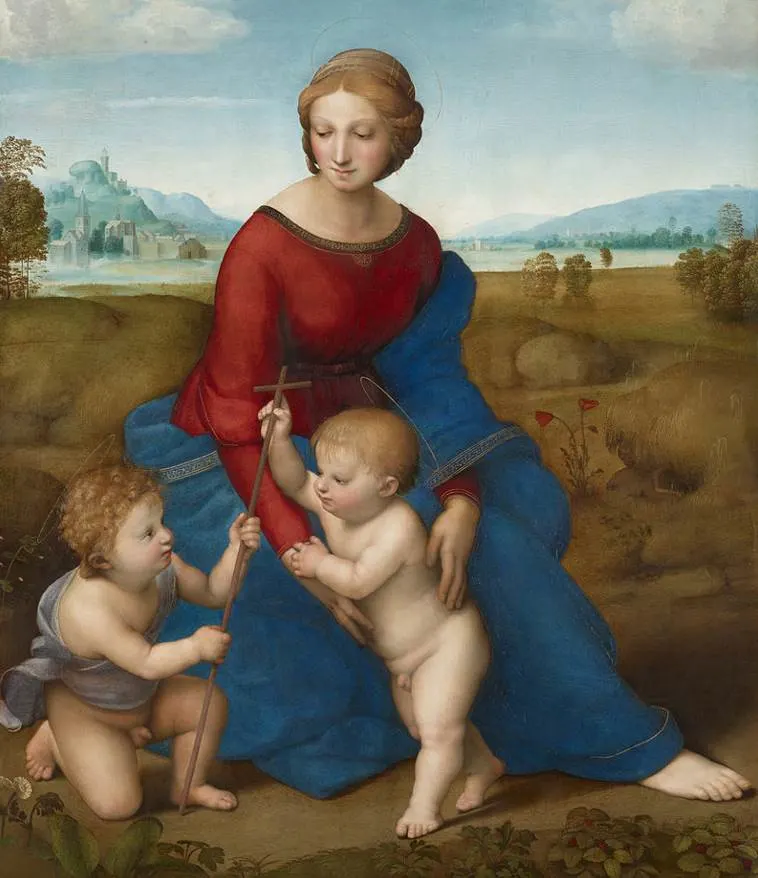
14. Madonna of the Pinks
- Date created: 1506-1507
- Location: National Gallery, London, United Kingdom
The Madonna of the Pinks is a delicate little work of art that Raphael painted during his so-called “Florentine Period” between 1504 and 1508. This was a time that he was already a master painter and lived a nomadic life, earning commissions in various cities in northern Italy.
This small painting has dimensions of just 27.9 × 22.4 centimeters (11.0 × 8.8 inches) because it has believed to have been commissioned to serve as a prayer aid for a woman who became a nun. It wasn’t until the year 1991 that it was identified as an authentic painting by Raphael as it was deemed to be a nice copy of the lost original.
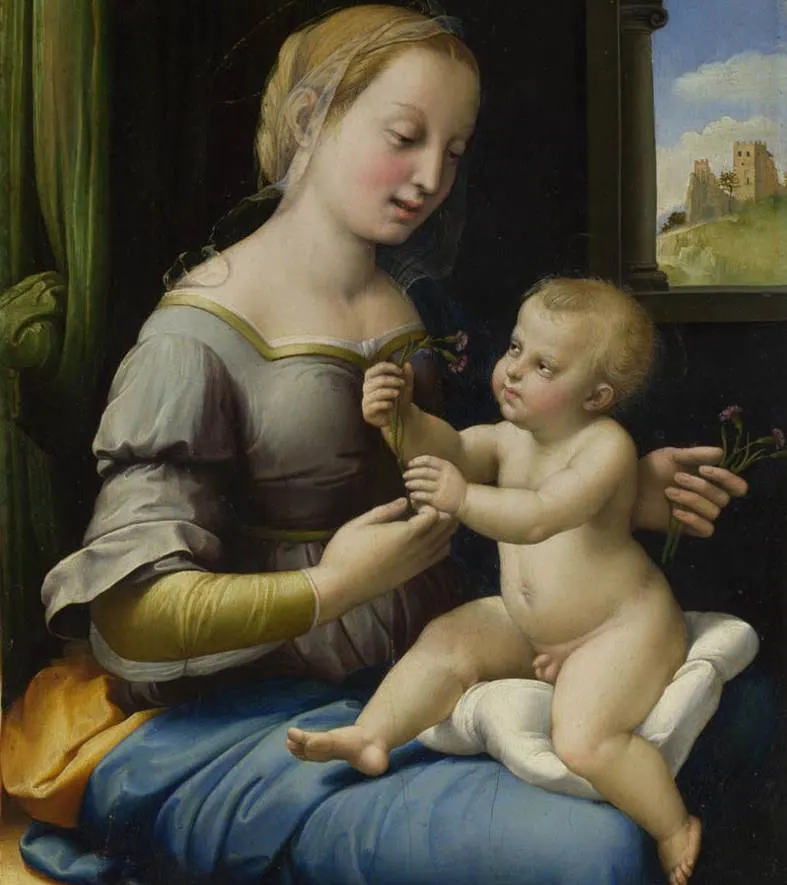
13. Sistine Madonna
- Date Created: 1512
- Location: Gemäldegalerie Alte Meister, Dresden, Germany
The Sistine Madonna was commissioned by Pope Julius II for the church of San Sisto in Piacenza. It has been located in Germany since 1754 but was moved to Moscow in Russia after World War II for about a decade, before being moved to Germany again.
The painting has dimensions of 265 × 196 centimeters (104 × 77 inches) and depicts the Madonna holding a child, flanked by Saint Sixtus and Saint Barbara who are standing on clouds. Two angels resting their elbows on the clouds can be seen at the bottom as well.

12. Portrait of Pope Julius II
- Date Created: 1511-1512
- Location: National Gallery, London, United Kingdom
Pope Julius II was a passionate art lover and it’s mainly because of him that we can enjoy so many works of the artists of the High Renaissance, including Raphael’s, Da Vinci’s, and Michelangelo’s. He commissioned countless pieces of art, including this portrait.
The Portrait of Pope Julius II has dimensions of 108 × 80.7 centimeters (43 × 31.8 inches) and has been described by Giorgio Vasari, an Italian historian, as “frightening everybody who saw it because it was so realistic as if it was the man himself sitting there.”
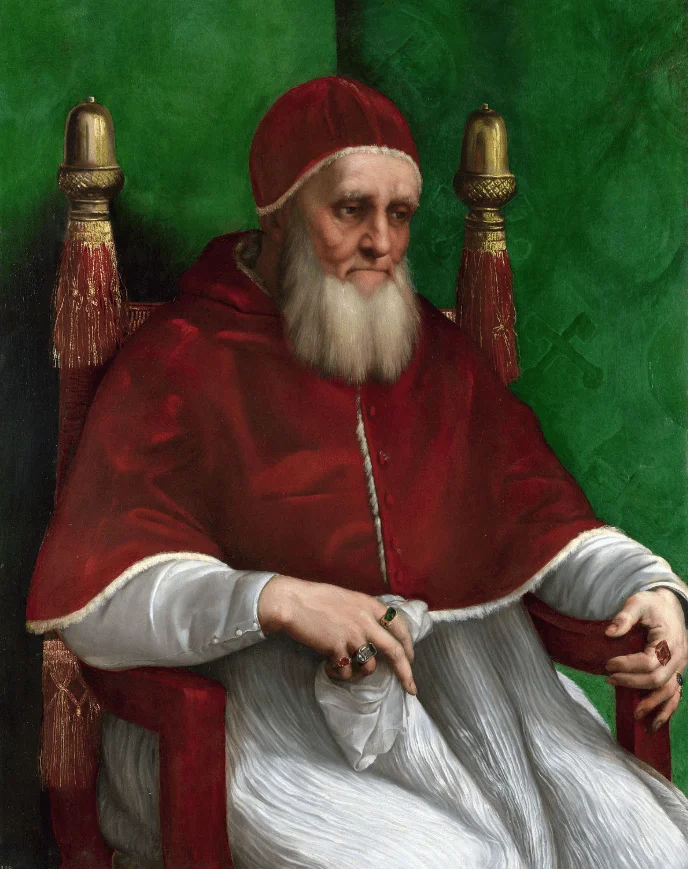
11. Madonna and Child with Saint John the Baptist
- Date Created: 1507-1508
- Location: Louvre Museum, Paris, France
The Madonna and Child with Saint John the Baptist is also known as “La belle jardinière” and is believed to have been commissioned by the Sienese patrician Fabrizio Sergardi in the year 1507.
It has dimensions of 122 × 80 centimeters (48 × 31.5 inches) and depicts the Virgin Mary with her child who is accompanied by a young John the Baptist. It is considered to be one of his ultimate works during his Florentine period, even though he wasn’t able to finish it himself but was done so by Ridolfo del Ghirlandaio.

10. Resurrection of Christ
- Date Created: 1499-1502
- Location: São Paulo Museum of Art, São Paulo, Brazil
The Resurrection of Christ is also known as “The Kinnaird Resurrection” because of its former owner, Lord Kinnaird. It’s one of Raphael’s earliest known works and it’s not exactly sure who commissioned it. It’s assumed it was part of a larger painting, possibly the Baronci altarpiece which was severely damaged during an earthquake in 1789.
It has dimensions of 56.5 × 44, 47 centimeters (17 x 22.2 inches), and was acquired by the São Paulo Museum of Art in Brazil in 1954. It is the only work of the artist located in the Southern Hemisphere.
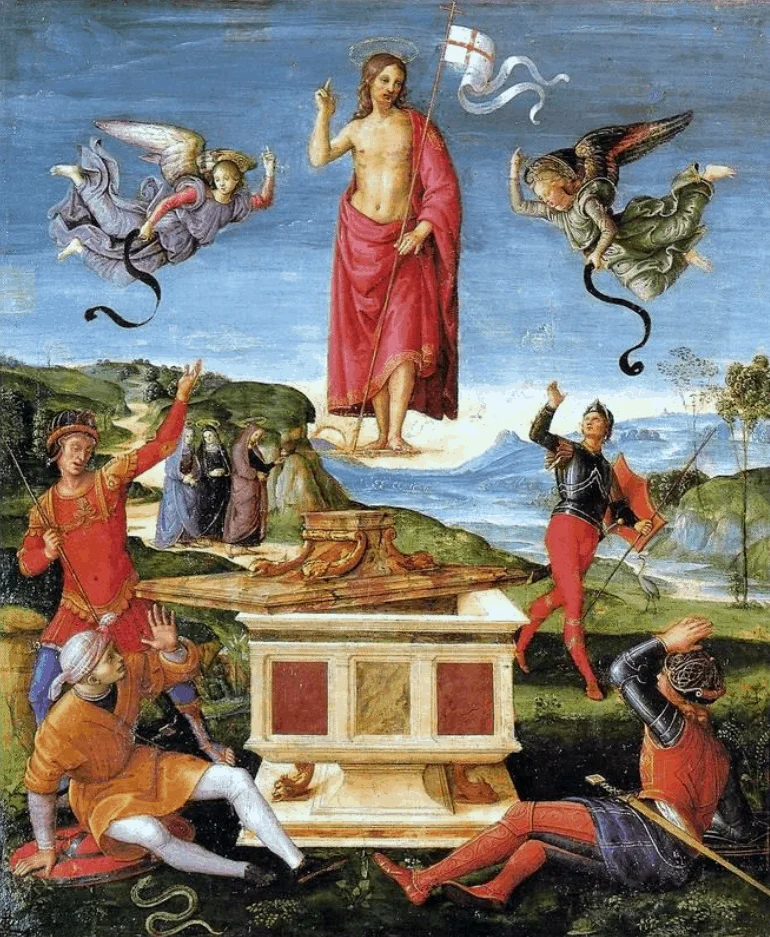
9. The Parnassus
- Date Created: 1509-1511
- Location: Apostolic Palace, Vatican Museums, Vatican City
The Parnassus is one of the amazing frescoes created by Raphael in the so-called “Raphael Rooms” in the Apostolic Palace in Vatican City. These rooms consist of 4 reception rooms in the pope’s residential palace.
This fresco has a width of about 670 centimeters (260 inches) and was painted in the “Stanza della Segnatura” which has 4 frescoes depicting the 4 key elements of human knowledge, philosophy, religion, poetry, and law. The Parnassus depicts the mythological Mount Parnassus where Apollo dwells.

8. Disputation of the Holy Sacrament
- Date created: 1509-1510
- Location: Apostolic Palace, Vatican Museums, Vatican City
The Disputation of the Holy Sacrament is another painting located in the Stanze della Segantura inside the Apostolic Palace in Vatican City. It was the first fresco to be completed in this series of paintings that he completed during the final decades of his life.
This monumental work of art has dimensions of 500 × 770 centimeters (196 × 303 inches) and is split into a heavenly and an earthly part. The scene depicts numerous people who are important in the Roman Catholic world, including Jesus Christ and God the Father above, and various saints, popes, and other important Catholic people below.
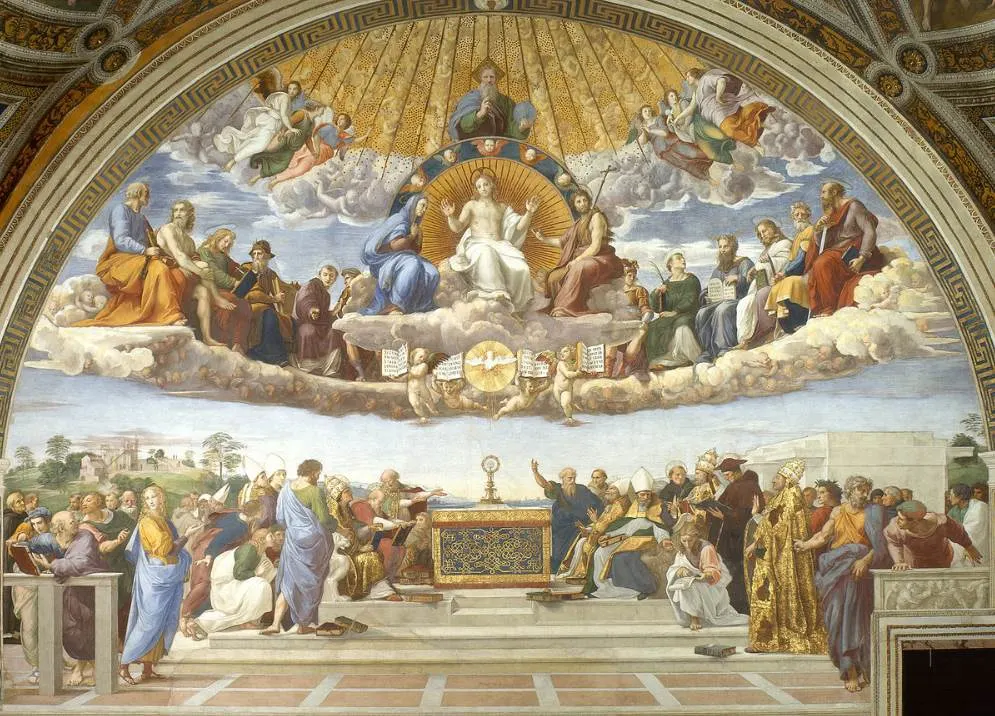
7. Madonna and Child Enthroned with Saints
- Date Created: 1504-1505
- Location: Metropolitan Museum of Art, New York City, United States
The Madonna and Child Enthroned with Saints is also referred to as the “Colonna Altarpiece.” The painting got its name because it’s part of a much larger altarpiece of which many panels were bought by the aristocratic Colonna Family from Rome, from which it derived its alternative name.
The painting has dimensions of 172.4 × 172.4 centimeters (67.9 in × 67.9 inches). Other panels of the complete altarpiece can be found in the National Gallery in London, the Isabella Stewart Gardner Museum, in Boston, and Dulwich Picture Gallery, in London. This painting is the only altarpiece by Raphael located in the United States.

6. Madonna of the Goldfinch
- Date Created: 1505-1506
- Location: Galleria degli Uffizi, Florence, Italy
Madonna of the Goldfinch is also referred to as “Madonna del Cardellino” and is another painting depicting the Virgin Mary with her child and a young Saint John the Baptist. It’s part of a large series of Madonnas that Raphael painted which has a similar composition.
The Madonna of the Goldfinch has dimensions of 107 × 77 centimeters (42 × 30 inches) and was originally a wedding gift from Raphael to his friend Lorenzo Nasi. The painting was broken into 17 pieces during an earthquake in 1548 and has only recently been restored, a process that was completed in 2008 and which took over 10 years.

5. The Marriage of the Virgin
- Date Created: 1504
- Location: Pinacoteca di Brera, Milan, Italy
The Marriage of the Virgin is also referred to as “Lo Sposalizio” and was originally commissioned for the Franciscan church of San Francesco, Città di Castello, in the Umbria Region of Italy. It was the final painting of 3 commissions that were sent by the church.
The painting has dimensions of 174 × 121 centimeters (69 in × 48 inches) and depicts the marriage ceremony of Mary and Joseph and has been described by Giorgio Vasari as “a masterpiece in which we can see the progress in Raphael’s style.” This mainly refers to the complex temple painted in the background.

4. The Deposition
- Date Created: 1507
- Location: Galleria Borghese, Rome, Italy
The Deposition is also referred to as “The Entombment” and was commissioned by Atalanta Baglioni of Perugia in honor of her son, Grifonetto Baglioni, who was killed in front of her eyes by members of a rival faction in the area. Because of this, Raphael meticulously planned the painting and created numerous drawings in preparation.
The painting has dimensions of 184 × 176 centimeters (72 × 69 inches) and is the central part of a larger altarpiece of the same commission. The painting was briefly confiscated by the French during the French Revolution in 1797, it was returned to Italy in 1815.

3. La Fornarina
- Date Created: 1518-1519
- Location: Galleria Nazionale d’Arte Antica, Rome, Italy
La Fornarina is a painting created by Raphael in the final stages of his life. It depicts the daughter of the baker (which is how it got its name) named Margherita Luti, who is considered to be Raphael’s mistress.
The painting has dimensions of 85 × 60 centimeters (33 × 24 inches) and depicts the woman with bare breasts as she attempts to cover her left breast with her hand. The story about Raphael’s death is that he collapsed due to excessive lovemaking, which gives the story of this painting an extra dimension.
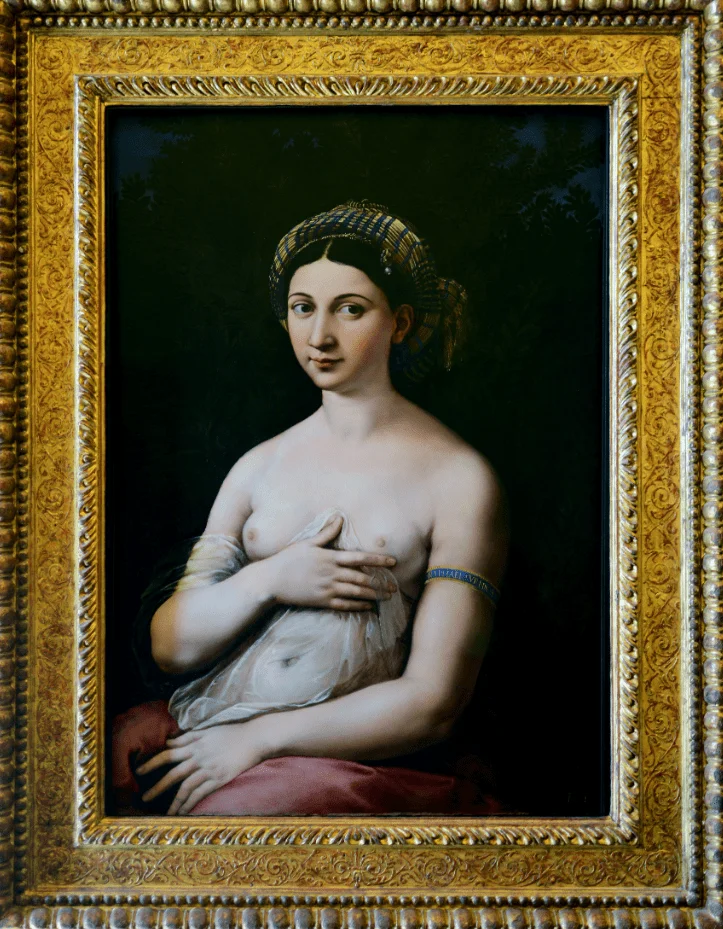
2. Transfiguration
- Date Created: 1516-1520
- Location: Pinacoteca Vaticana, Vatican City
The Transfiguration was his final painting of Raphael as he worked on it from 1516 until he died in 1520. It was commissioned as an altarpiece for the Narbonne Cathedral in France by then-Cardinal Giulio de Medici who would later become Pope Clement VII (1523–1534).
The painting has dimensions of 405 x 278 centimeters (159 × 109 inches) and is considered to be the ultimate example of Raphael’s development as a painter. Because of this, it wasn’t just considered to be the most famous painting by Raphael, but the most famous oil painting in the world from the 16th to the 20th century.
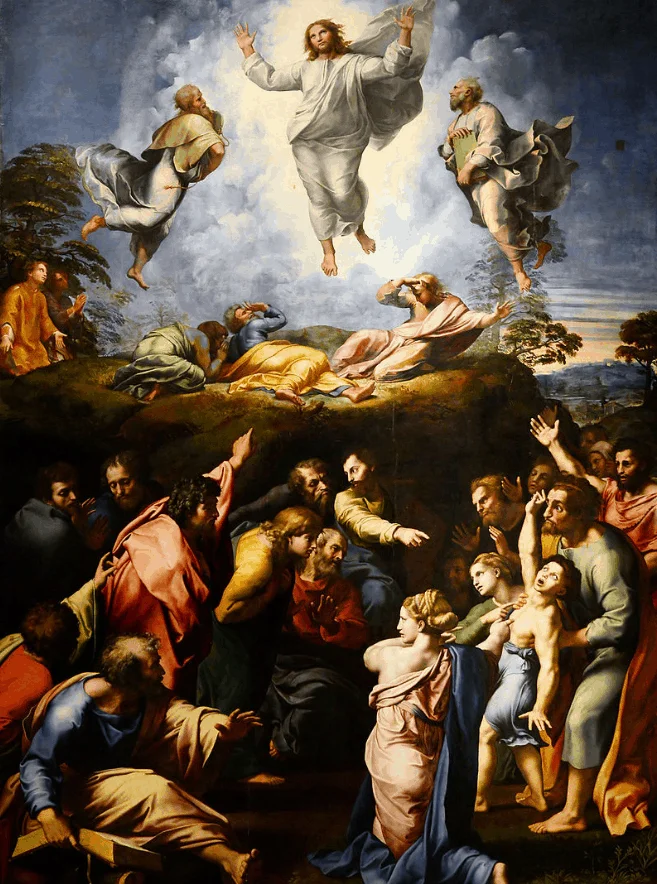
1. The School of Athens
- Date Created: 1509-1511
- Location: Apostolic Palace, Vatican City
The School of Athens is another fresco in the Stanza della Segnatura, one of the 4 Raphael Rooms in the Apostolic Palace in Vatican City.
This painting is representing philosophy and is famous for its accurate perspective projection and the fact that Raphael used various of his colleagues as his inspiration to depict the world’s greatest thinkers, such as Leonardo da Vinci as Plato, Bramante as Euclid, and Michelangelo as Heraclitus. He also included himself as Apelles, a famous painter in Ancient Greece.
The School of Athens is considered to be Raphael’s ultimate masterpiece and has been described as “the perfect embodiment of the classical spirit of the Renaissance.”
